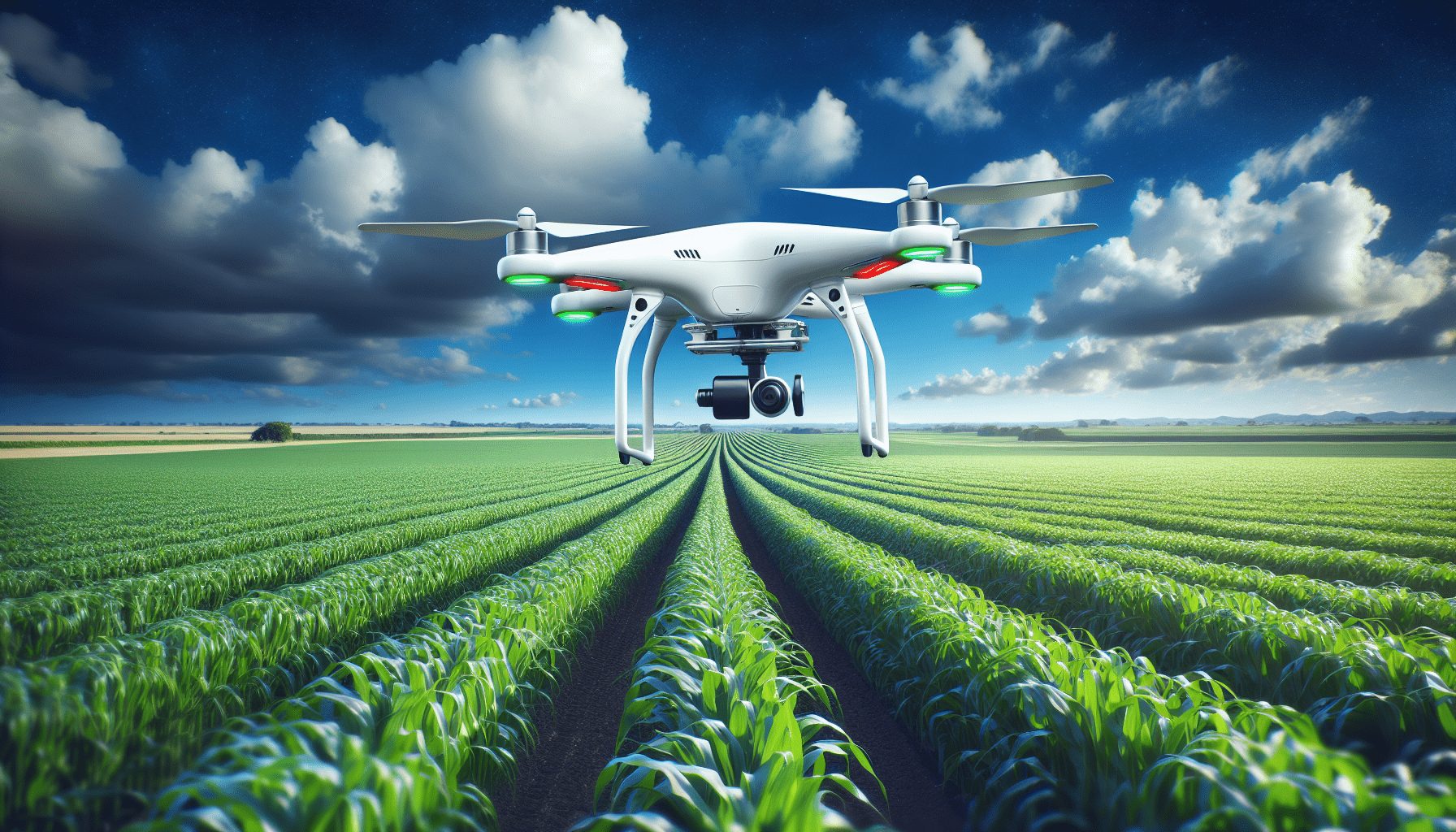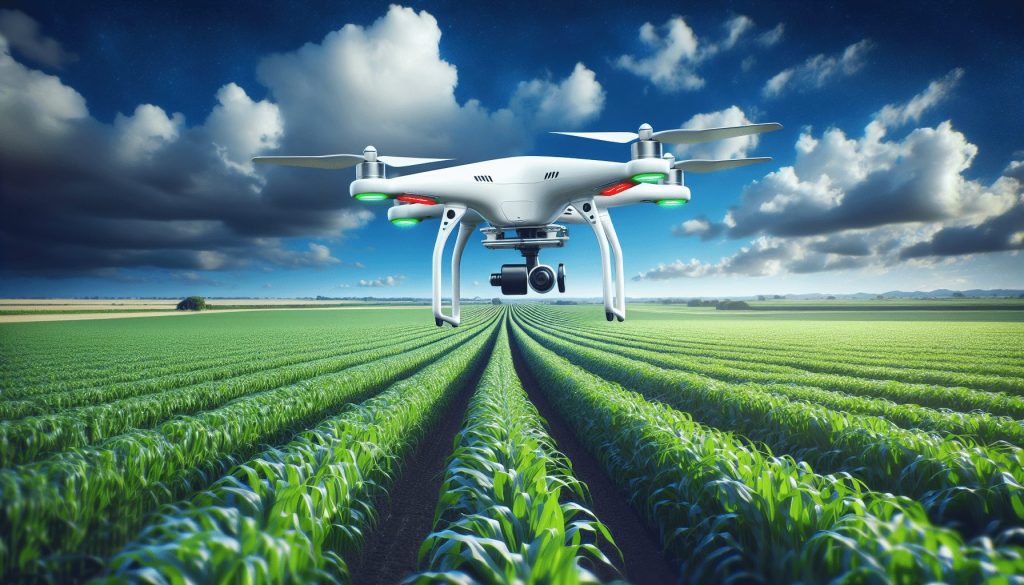Physical Address
304 North Cardinal St.
Dorchester Center, MA 02124
Physical Address
304 North Cardinal St.
Dorchester Center, MA 02124


This post may contain affiliate links. As an Amazon Associate, we may earn commissions from qualifying purchases.
Have you ever wondered how aerial drones are being used to transform the agricultural industry? The advent of drone technology has brought significant changes to many fields, and agriculture is no exception. In the past, farmers relied heavily on traditional methods to monitor and manage their crops, but drones have opened up a new world of possibilities.
Drones, also known as unmanned aerial vehicles (UAVs), come equipped with advanced technology that enables them to perform various tasks in agriculture more efficiently and accurately. You might be curious about how these flying machines can possibly aid in farming. You’ll be surprised at the innovative ways drones are incorporated into modern agricultural practices.
Utilizing drones for agricultural purposes offers numerous benefits, including increased efficiency, cost savings, and improved data collection. These benefits cumulatively lead to better crop management and higher yields. Here’s a closer look at why drones have become an essential tool for farmers:
Drones can perform tasks quickly and reach areas that might be difficult or impossible for humans to access. For example, a drone can survey a large field in a short time, providing farmers with immediate insights into crop health and field conditions.
Although the initial investment in drone technology can be high, the long-term savings are significant. Drones reduce the need for manual labor and can lower costs associated with crop monitoring and management. Additionally, early detection of issues such as pest infestations can save money on pesticides and other treatments.
Drones equipped with various sensors can gather detailed and accurate data on crop health, soil conditions, and weather patterns. This data enables more informed decision-making, which leads to better crop management practices.

Different types of drones are used in agriculture, each serving unique purposes based on their capabilities and the needs of the farmer. Here’s a breakdown of the main types:
| Type of Drone | Description |
|---|---|
| Fixed-Wing Drones | These drones have a wing structure like an airplane, making them well-suited for covering large areas and long flight times. They are often used for surveying large fields. |
| Rotary-Wing Drones | Rotary-wing drones, which include quadcopters, can hover in place and fly in multiple directions. They are versatile and can be used for a variety of tasks, including close-up inspections. |
The use of drones in agriculture spans several critical applications. Below, we break down some of the most common ways these aerial vehicles are transforming farming:
One of the primary uses of drones in agriculture is crop monitoring. By using multispectral, hyperspectral, or thermal sensors, drones can collect data on crop health. This allows you to detect any issues such as nutrient deficiencies, diseases, or infestations early.
Before planting, you need to understand the condition of your soil. Drones offer precise soil analysis by capturing high-resolution images and creating detailed maps of your fields. These maps can indicate soil types, moisture levels, and even areas prone to erosion.
Proper irrigation is crucial for healthy crops. Drones equipped with thermal cameras can identify areas of your field that are receiving too much or too little water. You can then adjust your irrigation systems accordingly to ensure optimal water distribution.
Pesticide application is another area where drones excel. Traditional methods can be time-consuming and often result in uneven coverage. Drones can spray pesticides accurately and evenly over crops, reducing the amount of chemicals used and minimizing environmental impact.
Some drones are even capable of planting seeds. Using a drone can save you time and ensure more uniform planting, which can lead to better crop growth and increased yields.
Drones are not just limited to crop farming; they also play a significant role in livestock management. By flying over pastures, drones can monitor the health and location of your animals. They can even detect issues like water shortages or fence damage.

While the advantages of using drones in agriculture are substantial, there are also some challenges and limitations to consider. It’s crucial to be aware of these to make informed decisions about incorporating drones into your farming practices.
Although drones can save money in the long run, the initial investment and ongoing maintenance costs can be quite high. You need to budget for the purchase of the drone, as well as any necessary sensors and software.
Operating a drone requires some level of technical skill and knowledge. You might need to undergo training or hire someone with experience in drone technology.
There are regulations governing the use of drones, which can vary by region. You need to comply with these regulations, which may include obtaining permits and adhering to specific flight restrictions.
Drones are affected by weather conditions. High winds, rain, or extreme temperatures can hinder their performance. This means you need to plan their use according to favorable weather conditions.
The future of drones in agriculture looks very promising, with advancements in technology likely to make them even more integral to farming practices. Here’s what you can expect in the coming years:
Sensors are constantly improving in terms of accuracy and capabilities. Future drones will likely be able to gather even more detailed data, offering better insights into crop and soil health.
As artificial intelligence and machine learning continue to develop, drones will become more autonomous. This means they will be able to perform tasks with minimal human intervention, saving you even more time and effort.
With advancements in data processing and analytics, future drones will be able to analyze data in real-time. This allows immediate action, further enhancing your ability to manage crops effectively.
Drones will increasingly integrate with other agricultural technologies, such as IoT devices and precision farming tools. This seamless integration will provide a more comprehensive approach to farm management.
Aerial drones have proven to be a revolutionary tool in modern agriculture. Through various applications such as crop monitoring, soil analysis, and irrigation management, drones offer numerous benefits that can lead to increased efficiency, cost savings, and improved crop yields. While there are challenges to consider, the future of drone technology in agriculture looks promising, with continuous advancements poised to make farming even more efficient and productive.
Whether you’re just starting to explore the possibilities or are looking to expand your use of drones, embracing this technology can help you take your farming practices to the next level.